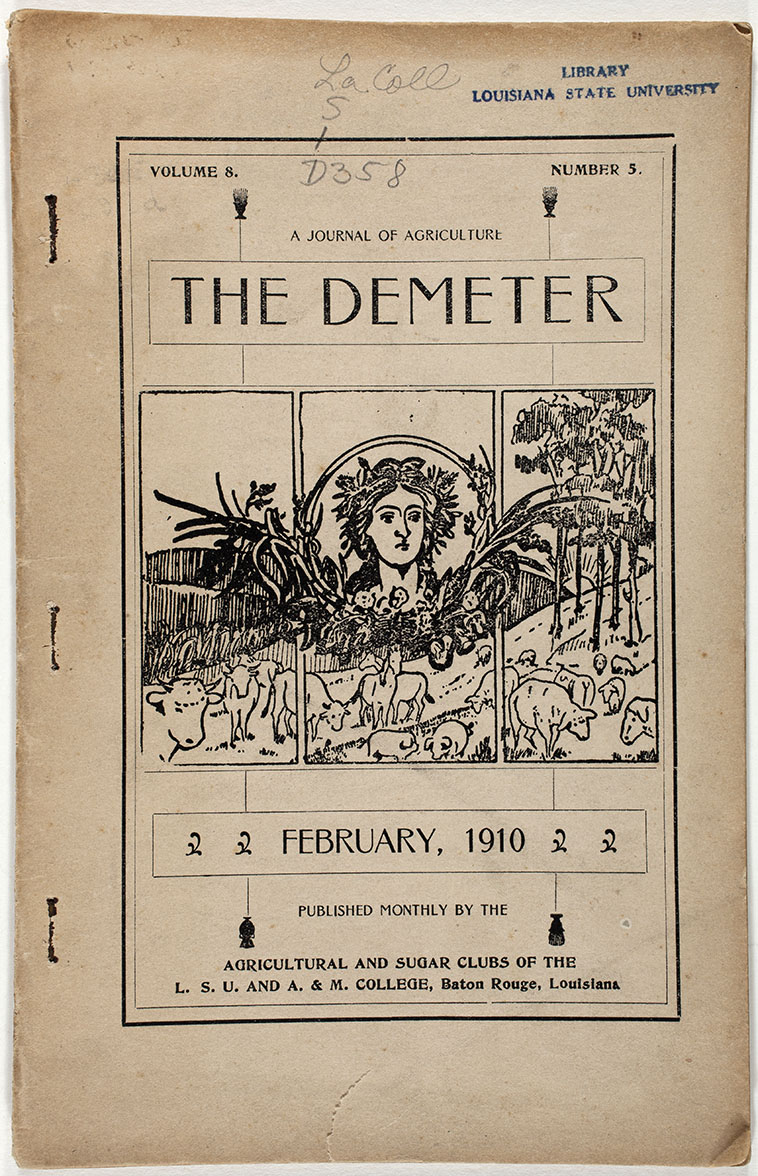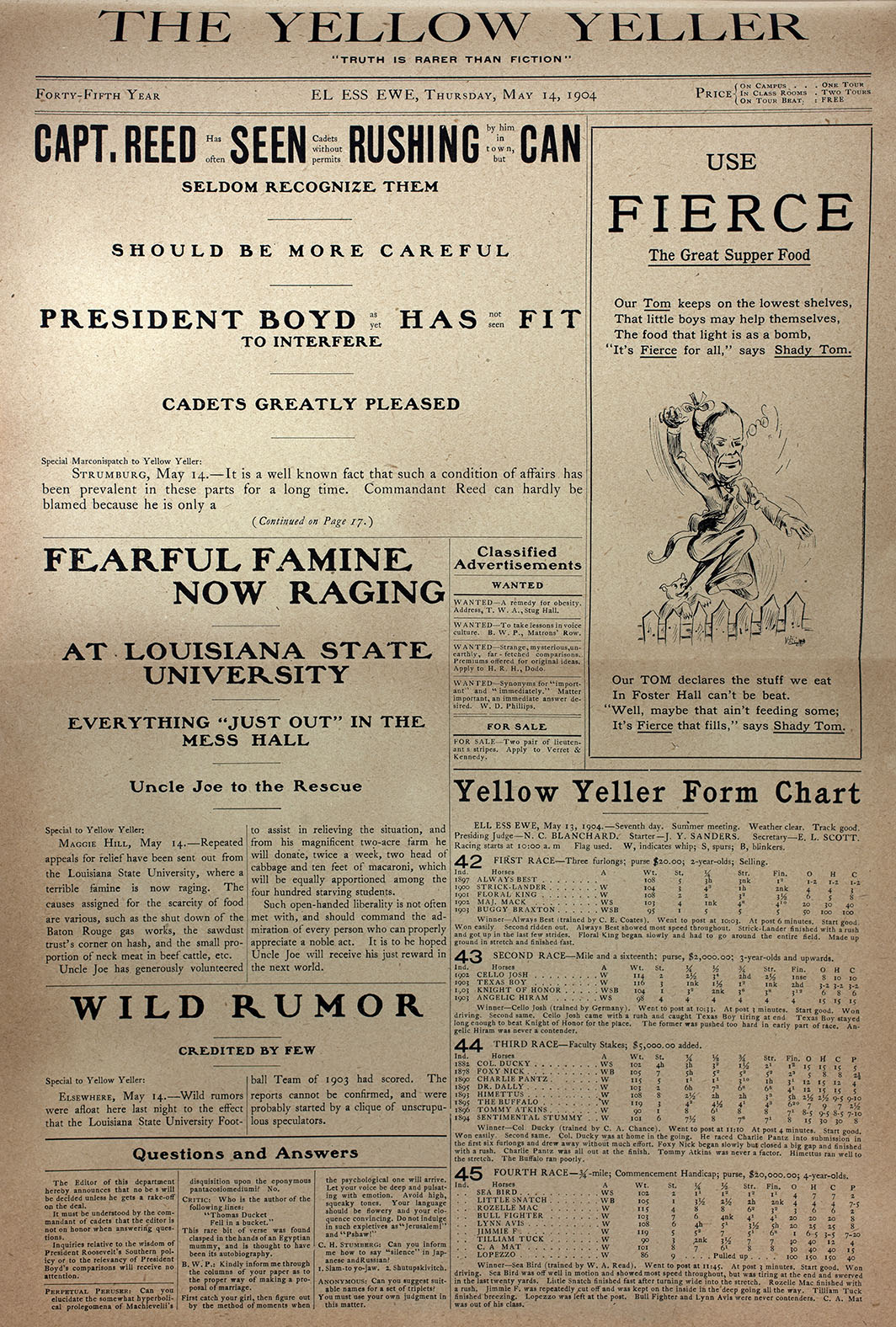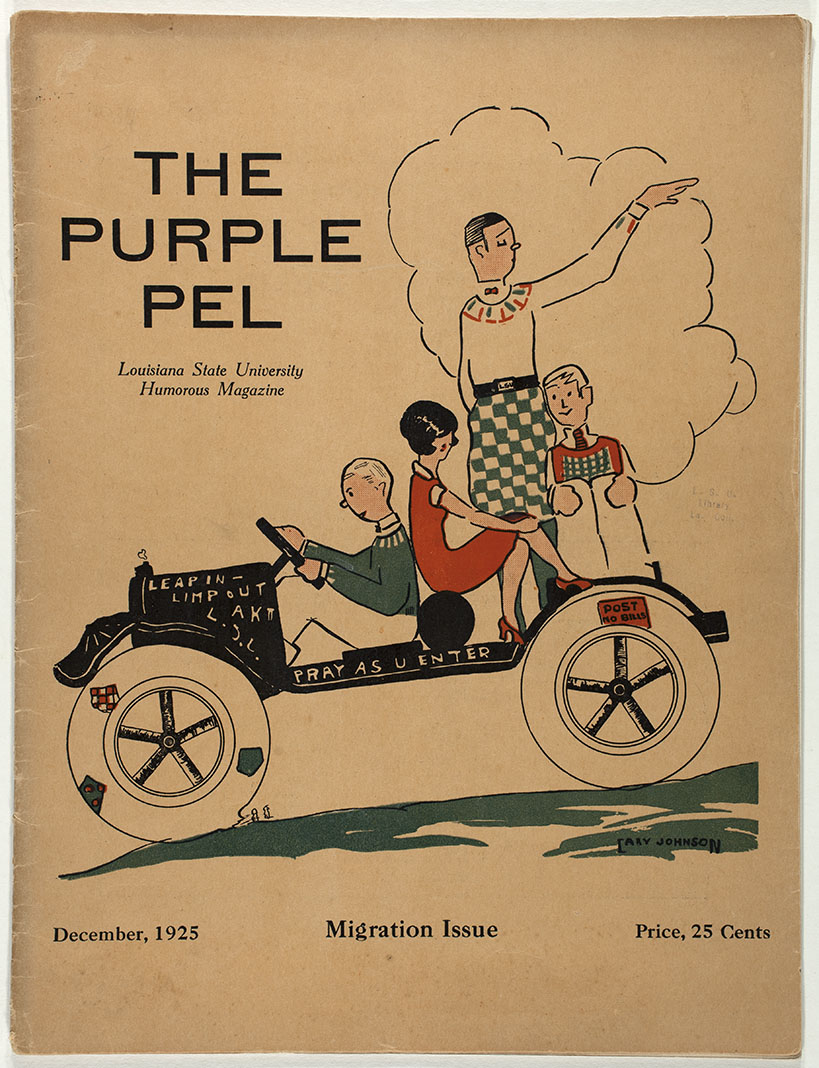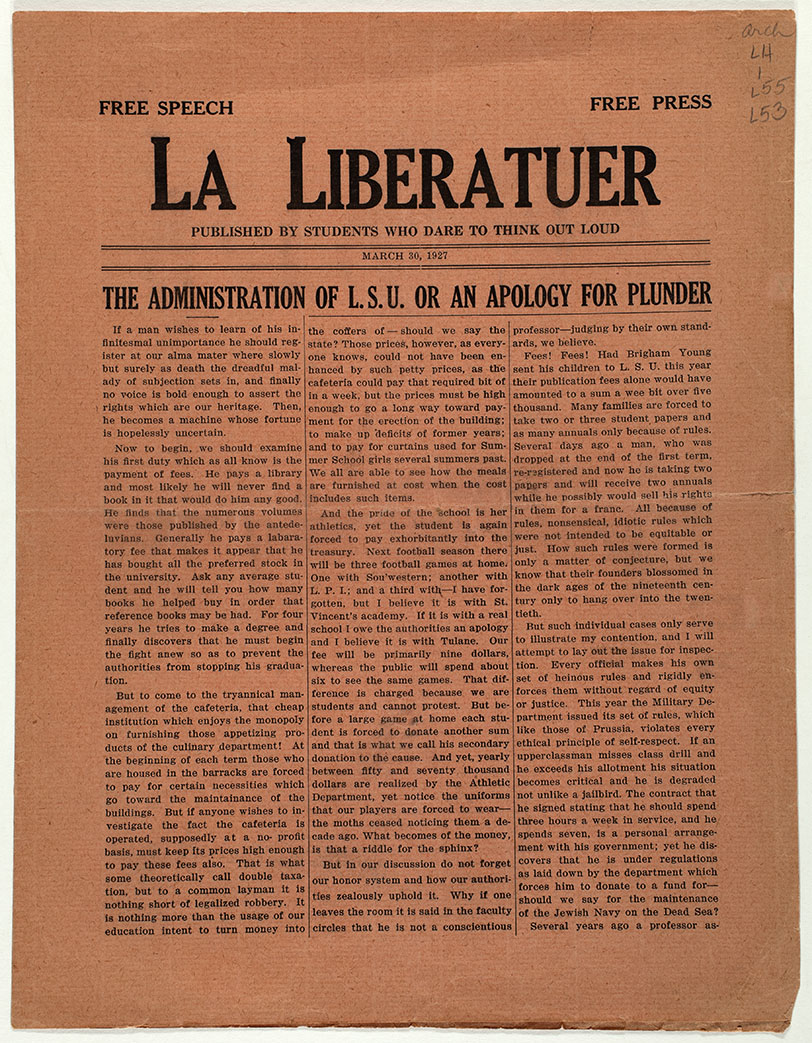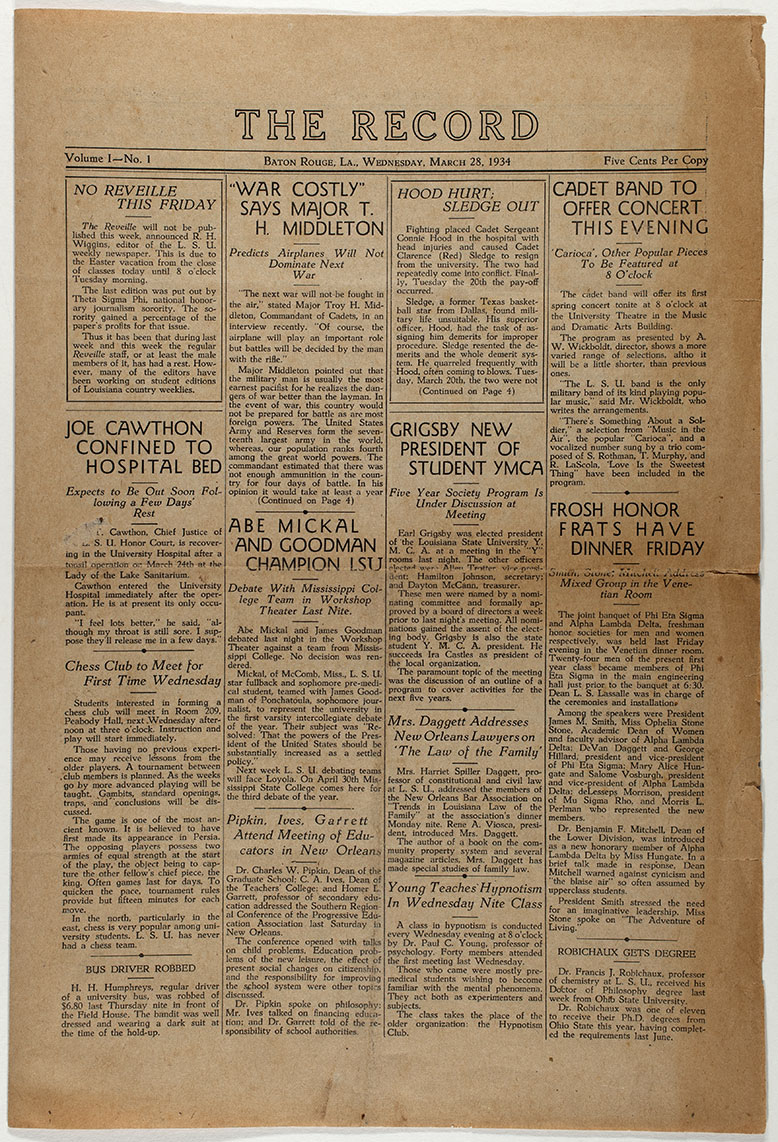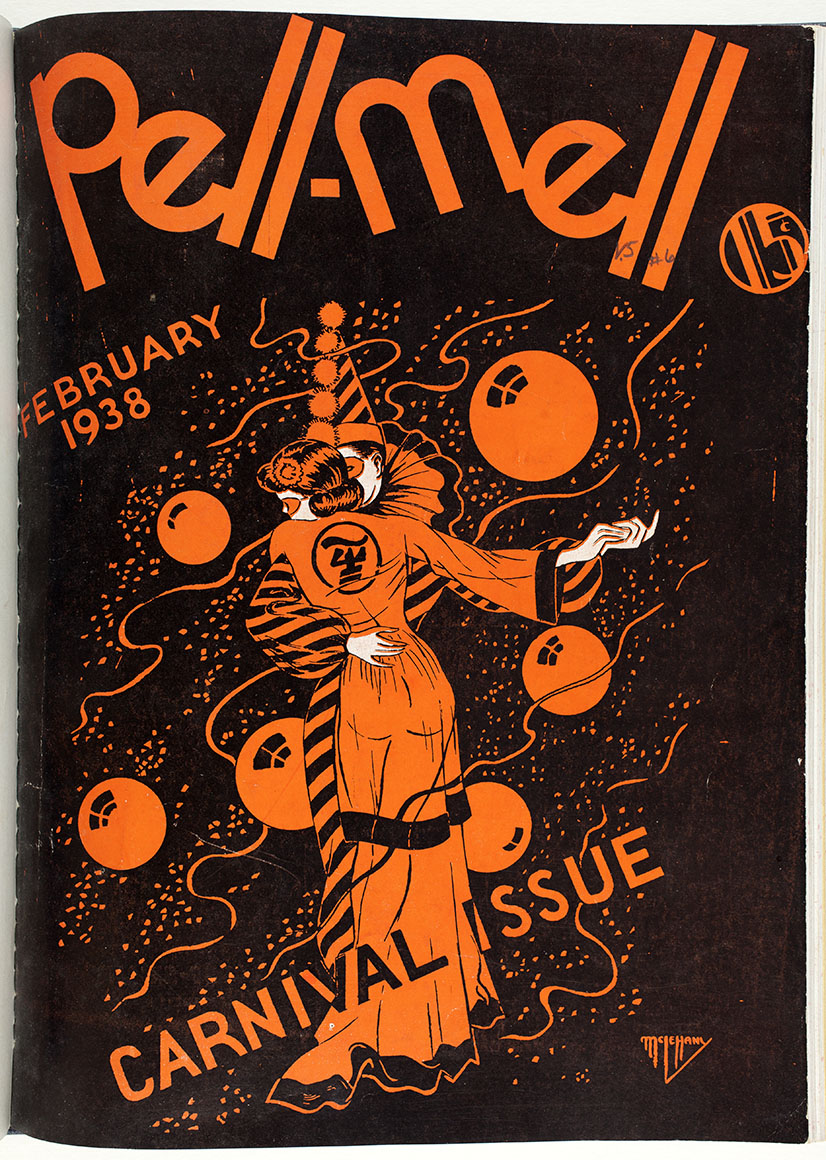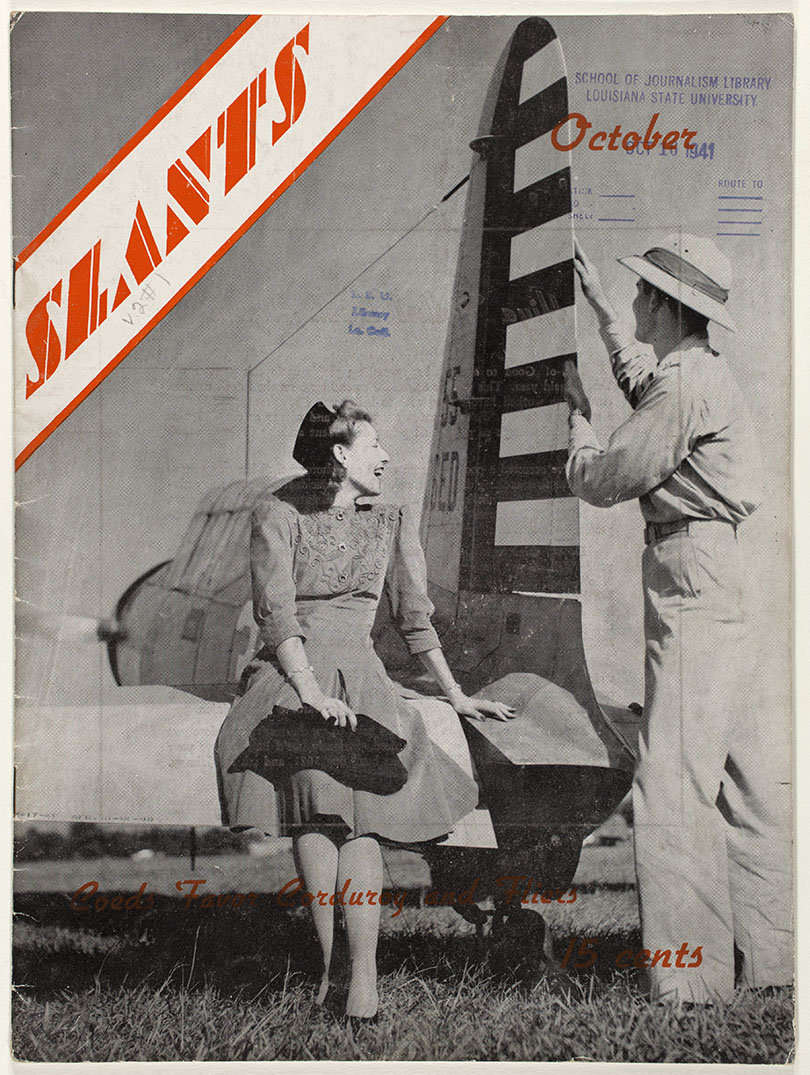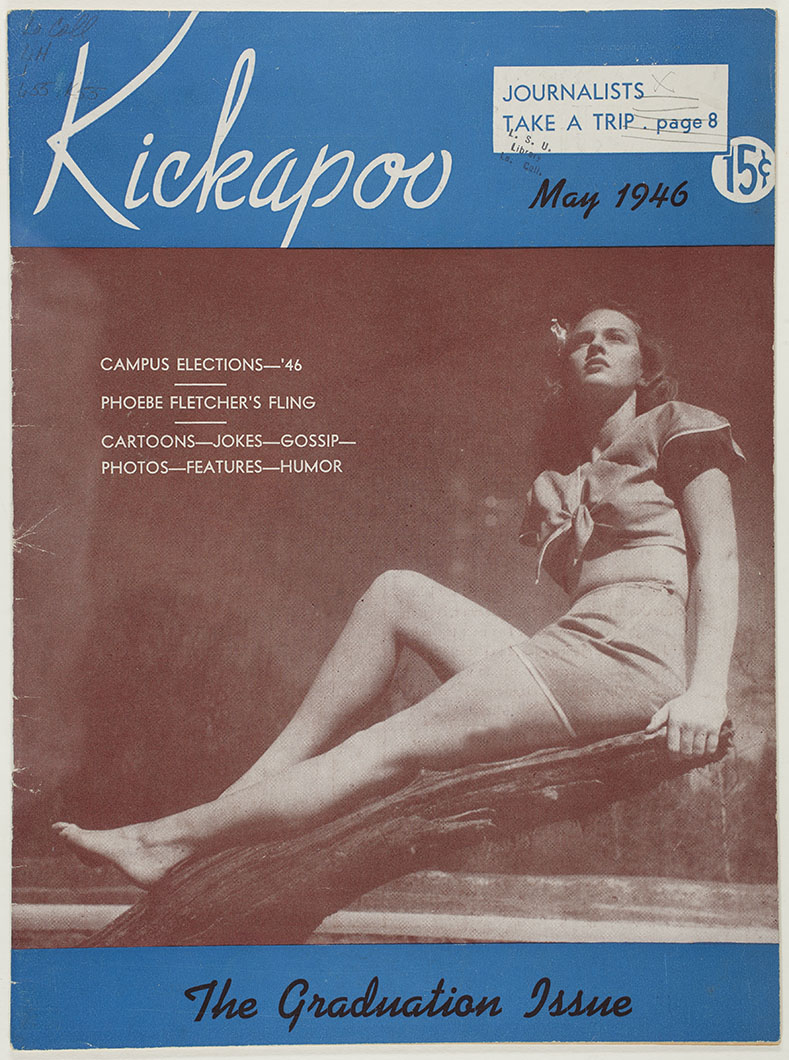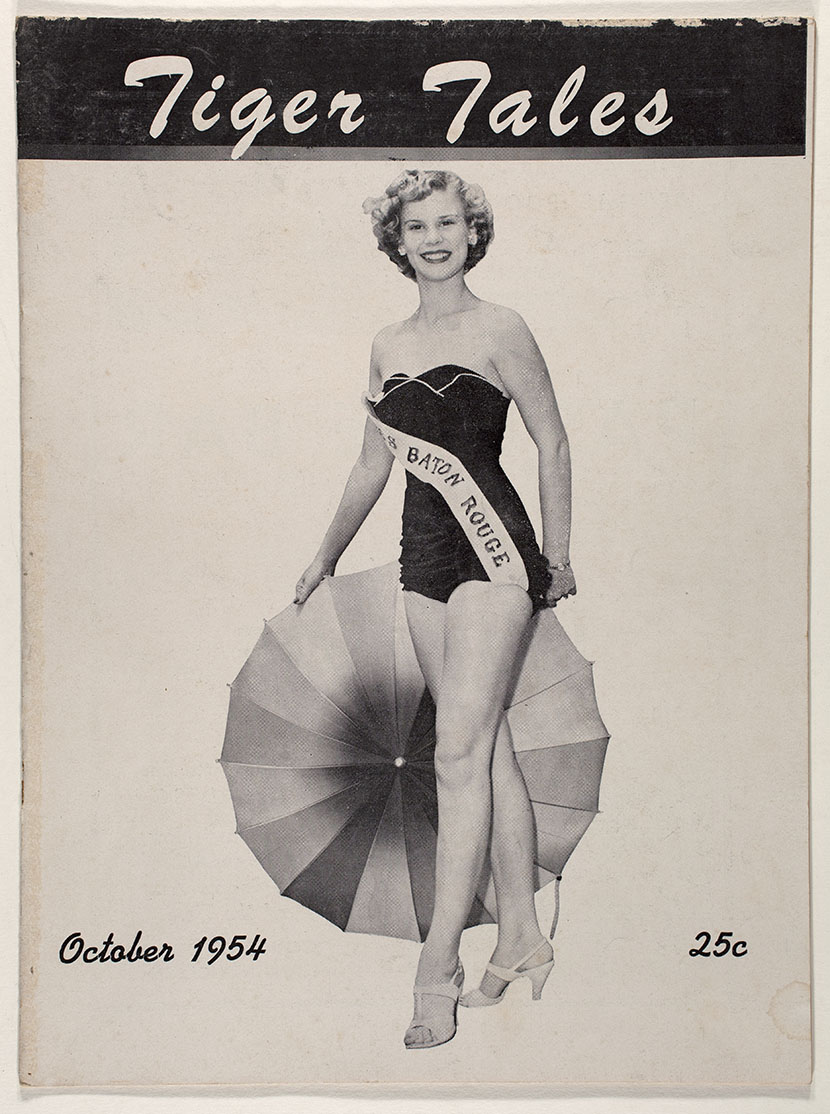The LSU student press: an annotated bibliography (part 1)
Note: This is the first in a five-part occasional series on LSU’s official and unofficial student newspapers, yearbooks, magazines, and literary journals.
Since 1897, The Daily Reveille has served as LSU’s official voice for student news and opinion, joined later by other similarly long-lasting yearbooks, magazines, and literary journals sanctioned by the university. Nevertheless, students periodically have found the Reveille and its sister publications to be insufficient organs of student speech and have opted to publish independent newspapers and magazines unaffiliated with the university. Rarely lasting more than a couple of years and usually vanishing without even a whimper, these independent serials typically fell into two categories: relatively robust humor magazines or short-lived newspapers dedicated to some particular viewpoint or grievance. The first three parts of this five-part annotated bibliography will explore our university’s student-produced independent periodicals—at least the ones I know about.
Hill Memorial Library LLMVC -- S1 .D358
Middleton Library -- MICROFILM 4153
The earliest known independent student publication was a surprisingly long-lasting agricultural journal published by the students of the LSU Agricultural Club. Named for the Greek goddess of agriculture, The Demeter appeared around eight times per year, publishing articles and editorials on sundry agricultural topics through twelve volumes.
Hill Memorial Library UARCHIVES -- LD3118 .G8 1904
The earliest known “EL ESS EWE” student humor publication was a single sheet broadside titled The Yellow Yeller, issued on May 14, 1904. It is unclear how or even if it was circulated initially, but it later appeared tipped in between pages 194 and 195 of each copy of the 1904 Gumbo. The cadet editors lampooned President Thomas Boyd, Commandant of Cadets Alvan Read, the hapless 1903 football team, and various others with sophomoric inside jokes that are difficult to decipher over a century later.
Hill Memorial Library LLMVC -- LH1 .L55 G5 OVER
Barely seven years after women were admitted to the university on a regular basis, the all-female Scribblers’ Club inaugurated the first general-interest student publication with this once-a-semester magazine devoted to humor and satire. Opening with a plea for the university to afford female students with more amenities with which to pursue their interests, the magazine spoke for women students’ concerns among its short stories, jokes, and cartoons.
Hill Memorial Library LLMVC -- LH1 .L55 P87 OVER
The members of Sigma Delta Chi honorary journalism society and Theta Sigma Sigma inaugurated this humorous magazine of jokes, quips, one-liners, and cartoons in March 1924. An anonymous critic predicted an early demise, for “as is to be expected from young people, it has some things too personal, others to suggestive, & others too crude.” Regardless, The Purple Pel (short for pelican, a purple one often appearing on the cover) persisted in delivering period college humor at least into the spring of 1926.
Hill Memorial Library LLMVC -- LH1 .L55 W5 MCAGE & MICROFILM 6193
An outlawed fraternity and multiple charges of criminal libel shadowed the reputation of The Whangdoodle over three issues separated by a five-year hiatus. The first issue of this pink faux scandal sheet was published in early April 1925 by Boyce O’Bannon, an LSU sophomore, Sargent Pitcher, a former Tulane track star, and Thomas Holland, a former LSU student. It also had some association with Theta Nu Epsilon, an infamous fraternity that operated secretly on campus. Apparently, some of the faculty couldn’t take a joke, so authorities quickly identified and charged the three men for libel, although it isn’t clear how they fared.
The Whangdoodle was resumed for a couple more issues in 1930 under the editorship of Kemble K. Kennedy, a law student and protégé of Gov. Huey P. Long who evidently was also involved in ΘΝΕ. He was eventually convicted of criminal libel and circulating obscene matter, whereupon he was expelled from the law school. Kennedy served seven days of a one-year sentence in the East Baton Rouge Parish jail, eventually receiving a reprieve from Gov. Long. Gov. O.K. Allen later granted Kennedy a pardon and arranged for LSU to reinstate him in 1933.
Hill Memorial Library LLMVC -- LH1 .L55 L53 & MICROFILM 6193
On the morning of March 30, 1927, an anonymous group of seniors unfurled a huge white flag bearing the words “Down with the Dean of Men and his Cut System” from the flagpole in the quad—then greased the pole. Angry over a rule that subjected underperforming students to dismissal, the students distributed copies of La Liberateur that same evening. “Published by students who dare to think out loud” (but who initially did not know how to spell liberateur), the anonymous critics blasted the dean of men and condemned the administration for charging exorbitant fees for the library, laboratory, and football games. Another issue appeared two days later before La Liberateur ceased its brief, angry existence.
Hill Memorial Library LLMVC -- LH1 .L55 A56 & MICROFILM 6193
The first issue of Anonymous, published on January 14, 1928, is all that remains of this “official organ of thinkers who will give their names upon request.” Their desire for concealment was understandable, as they managed to criticize viciously most everyone at the university—president, faculty, football coach, ROTC, and the Gumbo—in a four-page leaflet only nine inches high.
Hill Memorial Library LLMVC -- LH1 .L55 R43 FLAT & MICROFILM 6193
Other than a halfhearted promise to introduce phonetic spelling to journalism, there was nothing to distinguish this periodical of general news that obviously couldn’t compete with the Reveille. Only its inaugural issue of March 28, 1934 survives.
Hill Memorial Library LLMVC -- LH1 .L55 P4
Abounding with racy cartoons, jokes, campus gossip, sports news, cigarette advertisements, and photos of attractive coeds, the monthly Pell-Mell magazine became a campus institution in the 1930s and early ’40s. With issues usually based on particular themes—freshmen, fashion, sororities, fraternities, graduation, and other less decorous subjects—Pell-Mell thrived through 1941 when World War II appears to have interrupted publication. It changed hands editorially several times over its history, including a period under the journalism society Sigma Delta Chi, before limping to a close sometime in the late 1940s.
Hill Memorial Library LLMVC -- LH1 .L55 S52
Again, the war appears to have shorted the life of this monthly pictorial of campus life, but Slants managed to publish a few issues reporting on sports, theater, dances, ROTC events, and other happenings of interest to LSU students.
Hill Memorial Library LLMVC -- LH1 .L55 K55
Largely indistinguishable from Pell-Mell, the staff of this monthly variety magazine even felt compelled to insist that “any resemblance between Kickapoo and another magazine is purely coincidental.” It carried the same content as its rival—cartoons, jokes, gossip, sports, cigarette ads, chicks—but fared no better, folding at roughly the same time as Pell-Mell.
Hill Memorial Library LLMVC -- LH1 .L55 T535 OVER
LSU’s golden age of male-oriented collegiate humor that Pell-Mell and Kickapoo had pioneered came to a close with Tiger Tales, a chronically late monthly magazine that flourished briefly in the middle of the 1950s. Although the jokes became cruder and the ads for smokes disappeared, Tiger Tales faithfully carried the torch in all other respects. Gus Weill, later to become Louisiana’s first great political public relations specialist, contributed to a couple of issues in the spring of 1954.
Next time: Hippies, conservatives, and LSU’s political student newspapers of the ’60s and ’70s
